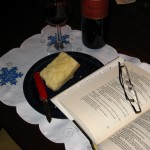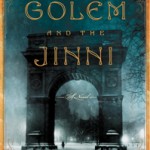I met an interesting man over New Years—it’s one of my hobbies, collecting interesting people.
 Ben & I were discussing our love of books, how wonderful it is to read and how hard it is to write, and he said something that struck me. He is having trouble with wearing out books—the books he uses a lot, especially the reference books. I thought about how I can wear out books—actually, I can wear out just about anything, but there are books I have read so much that they did begin to wear.
Ben & I were discussing our love of books, how wonderful it is to read and how hard it is to write, and he said something that struck me. He is having trouble with wearing out books—the books he uses a lot, especially the reference books. I thought about how I can wear out books—actually, I can wear out just about anything, but there are books I have read so much that they did begin to wear.
There are books I have worn out, and there are also books that I will eventually wear out.
I have a friend who is quite nice and very kind, but who never reads a book  more than once. I feel that this is like choosing to never see a sunset twice, or never listening to Beethoven’s 7th or Jump, Jive & Wail again, or never returning to New York City, or never eating a chocolate torte with a rich ganache because you have already had one.
more than once. I feel that this is like choosing to never see a sunset twice, or never listening to Beethoven’s 7th or Jump, Jive & Wail again, or never returning to New York City, or never eating a chocolate torte with a rich ganache because you have already had one.
My favorite book of this past year, one that I even bought trade-cloth, new, and retail, because I wanted to own it, was The Golem and the Jinni by Helene Wicker.
The premise is slightly fantastical, perhaps even slightly magic realist: a golem and a jinni meet up in the tenements of New York at the tail end of the 19th century.
For those of you who are not immersed in Eastern European Jewish Folk-lore, or students of Kabbala, or fans of the 1915 silent film, the Golem is a creature made of clay who can be brought to life by rabbis who practice Kabbalist rites by using one of the sacred names of God. The Golem is bound to serve a master, and is usually created in a time of great need to destroy the enemies of God’s people.
Most of you should know that a Jinni or a Djin (الجني) is a Middle-Eastern fire spirit, generally with magical powers, and often mercurial and chaotic.
A rather disagreeable man pays a mysterious and dangerous hermit a great deal of money to create a golem who is a perfect wife, then tries to emigrate to the United States. She, as yet un-awakened, is packed in a shipping crate. One night, suffering from a bad fever and from curiosity, he awakens her, but dies shortly after that. She has been created to serve a master—in fact, she can sense the desires of others and feels a strong, even painful, need to help them—but she is now on her own. In the harbor, she jumps out of the ship and walks ashore, into the Jewish section of Manhattan.
Before she gets into too much trouble—she steals a doughnut a young boy desires and gives it to him, but begins to feel a great rage when she is attacked—she is found by a kindly old rabbi who takes her in and tries to teach her how to be human (as well as keep the law).
Meanwhile, a tinsmith in the Little Syria section of New York is repairing a lamp and sets a Jinni free—mostly free; he is free from the lamp, but still captured in human form. To help him hide, the smith tries to teach him how to blend in as a human being. It is difficult, because he is proud and selfish and not used to caring what others think.

Eventually, of course, they will meet.
The characters are vividly drawn, and the plot is well carried out. It is a great story beautifully told, and that is the strength of the book. The time period is evoked in a way that is powerful—the grit and smell of the end of the century in a city that contained worlds of people all speaking in their native tongues.
However, it is also a fascinating meditation on what it means to be human—something each of them has to try to learn. They are also a wonderful study in contrast: she is a servant, and sensitive to the needs of others, solid, a creature of the earth, but underneath, also by nature a killing machine. He is self-centered and proud, living for himself with no thought of helping others, mercurial, a spirit of fire.
Yet learning to appear human changes each of them, and then meeting each other changes each of them forever. In some of the best moments, they meet at night (neither requires sleep, yet neither can move about freely during the day), and find themselves arguing about humans, and especially about her need to connect with and help others, which he finds baffling.
 It is an incredible book, so much so that I paid for it.
It is an incredible book, so much so that I paid for it.
If you wish, you can borrow mine—beautiful print on creamy paper edged in indigo—or it came out in paperback this past Tuesday.
For the New Year, eat well, read well, talk well and love well,
and do each as often as you can–


Sounds like a joy to read !
Thank you for the Staff Recommendation! My favorite read of 2013 was The Good Lord Bird by James McBride.